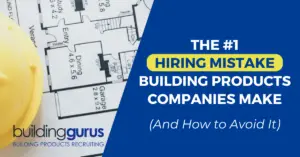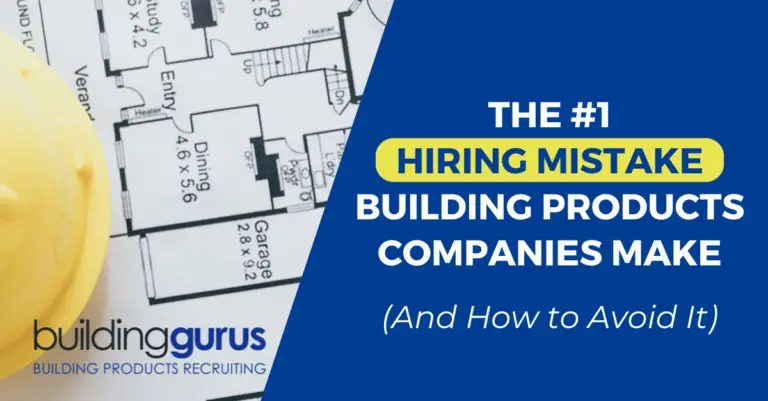Hiring top talent externally can be costly, time-consuming, and uncertain. The best companies in the building products industry don’t just hire leaders—they develop them from within.
💡 The truth? Your next great sales manager, regional leader, or VP might already be on your team—but that doesn’t mean every high performer wants to be a leader.
Before promoting someone into a leadership role, you need to identify who actually wants to lead, not just who’s great at sales or operations. Many top performers thrive as individual contributors and will resent or struggle in leadership positions if forced into them.
The key to developing strong sales and leadership talent internally is matching career growth opportunities with the right people—those who have the desire, skills, and mindset to step into leadership.
Here’s how to do it the right way so you create a strong leadership pipeline while keeping your best individual contributors engaged.
Step 1: Identify High-Potential Employees Who Actually Want Leadership
Most companies assume that top sales performers should become managers. But the truth is, many of them don’t want to manage people—they want to keep selling.
How to Spot Leadership Potential in Your Sales & Management Team:
- They express interest in leadership responsibilities—not just a promotion.
- They naturally coach or mentor others without being asked.
- They’re motivated by team success, not just individual wins.
- They have strong communication and decision-making skills.
- They see leadership as a way to create impact, not just higher pay.
📌 Action Step: Start leadership conversations early. Ask your top performers, “Where do you see your career going?” If they’re not interested in leadership, don’t push them into it.
Step 2: Create a Sales & Leadership Development Program
Even employees with strong leadership potential need training before they can successfully step into management roles.
✅ Structured Leadership Development Pathway:
- Step 1: Assign mentors or executive sponsors to guide potential leaders.
- Step 2: Offer sales and leadership training (coaching, strategic planning, decision-making).
- Step 3: Provide stretch assignments (special projects, leadership of internal teams).
- Step 4: Set clear milestones for promotions (e.g., sales rep → sales manager → regional leader).
💡 For those who don’t want leadership? Offer them growth opportunities as senior sales reps, product specialists, or market development strategists. Not every promotion needs to be a management role.
📌 Action Step: Document career progression plans for both leadership and high-performing individual contributors.
Step 3: Develop a Culture of Coaching & Mentorship
Companies that successfully grow their own leaders prioritize mentorship and coaching.
💡 Why This Works:
- Employees feel invested in and see a long-term future at your company.
- Leadership knowledge is passed down, keeping best practices strong.
- Senior leaders develop stronger teams, making their own jobs easier.
How to Build a Coaching Culture:
✅ Encourage peer mentoring—pair high performers with new hires.
✅ Provide regular leadership coaching—not just an annual review.
✅ Offer shadowing opportunities for employees to learn leadership skills in action.
📌 Action Step: Assign every high-potential employee a leadership mentor—only if they show interest.
Step 4: Promote from Within—But Only the Right People
💡 When employees see promotions happening internally, they stay longer.
Instead of looking externally for your next sales leader:
- Evaluate internal talent first—who has the skills and drive to step up?
- Prepare them in advance—don’t wait until a role is open to start developing leaders.
- Give internal candidates an advantage—show them a clear path forward.
💡 For those who aren’t leadership-bound? Keep them engaged with higher-level sales roles, industry thought leadership opportunities, and strategic projects.
📌 Action Step: Before hiring externally, require managers to present 1-2 internal candidates for leadership roles—who actually want the job.
The Bottom Line: Grow Leaders, Grow Your Business—But Let People Choose Their Path
Companies that invest in developing their own leadership talent see:
- Higher retention rates—employees stay when they see a future.
- Stronger performance—leaders who know the business drive better results.
- A more engaged workforce—people want to work for companies that invest in them.
💡 But forcing high performers into leadership will backfire.
✅ Develop leaders who actually want to lead.
✅ Give growth opportunities to those who prefer individual success.
✅ Build career paths that fit each employee’s strengths.
📩 Need help identifying and developing leadership talent?
Schedule a consultation today at www.BuildingGurus.com










